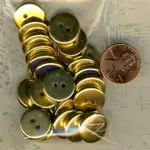gollum
Gold Member
- Joined
- Jan 2, 2006
- Messages
- 6,770
- Reaction score
- 7,734
- Golden Thread
- 0
- Location
- Arizona Vagrant
- Detector(s) used
- Minelab SD2200D (Modded)/ Whites GMT 24k / Fisher FX-3 / Fisher Gold Bug II / Fisher Gemini / Schiebel MIMID / Falcon MD-20
- Primary Interest:
- All Treasure Hunting
- #2,421
Thread Owner
Roy,
Something that goes with Father Garces' statement that the Indians were ignant in the Catechism and such. When a Jesuit Father first arrived in the New World, they were reviewed and picked for assignment to a particular area. Before getting to go out and become a full fledged Missionary Priest, they were required to learn the native language of the main tribe in their area of operation. This usually took about six weeks. Some took much longer. If they weren't able to learn the Indian Language, they were sent to work at the Cabeceras or Colegios.
So............................... why would EVERY Jesuit Missionary Father have to learn the languages of the natives in their areas, but not teach them to be Catholics? Maybe because they learned the native languages so they could use that knowledge to find wealth (of many types) for the Order? Just a thought.
Mike
Something that goes with Father Garces' statement that the Indians were ignant in the Catechism and such. When a Jesuit Father first arrived in the New World, they were reviewed and picked for assignment to a particular area. Before getting to go out and become a full fledged Missionary Priest, they were required to learn the native language of the main tribe in their area of operation. This usually took about six weeks. Some took much longer. If they weren't able to learn the Indian Language, they were sent to work at the Cabeceras or Colegios.
So............................... why would EVERY Jesuit Missionary Father have to learn the languages of the natives in their areas, but not teach them to be Catholics? Maybe because they learned the native languages so they could use that knowledge to find wealth (of many types) for the Order? Just a thought.
Mike





